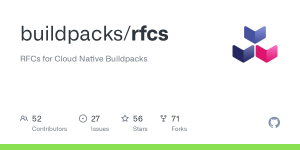Creating an effective Request For Comments (RFC) document is an essential process in the development and standardization of protocols, services, and procedures within various industries and communities. It contributes significantly to the overall project management and policy-making procedures. A comprehensive guide to creating a successful RFC involves several vital steps. The first step is identifying the purpose of the RFC. This should entail a clear and concise statement of the problem or issue to be addressed. Secondly, the proposed solution or approach to addressing the issue must be adequately outlined. It should be comprehensive, well-reasoned, and articulated in a manner that the intended audience can understand.
Additionally, it is crucial to include sufficient background information and a detailed explanation of the potential impact of the proposed changes. The RFC should also provide a timeline for the implementation of the proposed changes and a plan for monitoring and assessing its effectiveness. Throughout the process, it is essential to maintain an open and transparent communication channel to facilitate feedback and collaboration. This ensures that all the stakeholders have a chance to contribute to the process, enhancing the overall quality and acceptance of the RFC. Lastly, the document should be reviewed and revised appropriately before final submission. With these steps, one can create an effective RFC that solicits productive feedback, fosters collaboration, and drives meaningful changes in the respective field of interest.
Recognizing the Right Time to Draft an RFC
Recognizing the appropriate moment to draft a Request for Comments (RFC) is an integral part of project development and systems design. An RFC is a formal document that proposes a new internet standard or protocol, offering a detailed explanation of the implementation and operation of the proposed system. The primary purpose of an RFC is to generate discussions and solicit feedback from the broader community before a new standard or protocol is adopted. The initiation of an RFC is typically influenced by the discovery of a need or a gap within the existing system that requires rectification or enhancement. It is crucial to acknowledge that drafting an RFC should not be rushed.

As it is a process requiring a thorough understanding of the issue at hand, it is important to have a comprehensive knowledge base and supporting evidence. The drafting of an RFC should come after considerable research, study, and understanding of the existing system and its potential shortcomings. It should be an outcome of the identification of an inherent need for change, improvement, or a new implementation. A well-timed RFC corresponds with the development pace of the project, aligns with the project’s objectives, and is sensitive to the project’s constraints and limitations. This timing is essential as it ensures a smooth transition and successful integration of the proposed changes into the existing system. Therefore, the right time to draft an RFC is when there is a well-articulated need, backed by substantial research and understanding, and when the project’s timeline and objectives can accommodate the proposed changes.
Establishing the Purpose and Scope of Your RFC
Establishing the purpose and scope of your Request for Change (RFC) is a critical undertaking in any project management process. The primary objective of an RFC is to detail the need for a modification in a system, product, service, or project. It serves as a formal proposal for the desired change, communicating the rationale behind it, the expected benefits, and the potential impacts. The scope of your RFC, on the other hand, outlines the boundaries of the proposed change. It delineates what is included and what is not, providing clarity on the extent of the alteration.
The scope can cover a wide range of elements, from the processes and departments affected, to the resources needed, and the timeline for the implementation. A well-defined purpose and scope are essential in ensuring that all stakeholders understand the proposed change and can make informed decisions. They also help to prevent misunderstandings or misconceptions about the change, and ensure that the project remains focused and on track. Additionally, they provide a benchmark against which the success of the change can be measured. Thus, establishing the purpose and scope of your RFC is a vital step in the change management process. It fosters clear communication, promotes transparency, and ensures that all stakeholders are aligned towards a common goal.
Conducting Thorough Research for Your Project
Conducting thorough research for your project is an essential process that can significantly influence the outcome of your work. It provides a solid foundation for your arguments and allows you to build a comprehensive understanding of the subject matter. This process involves gathering information from diverse sources such as books, academic articles, reputable websites, and expert interviews to ensure that your project is rooted in well-established facts and credible theories. It is also important to critically analyze the collected data, as it will enable you to identify patterns, trends or inconsistencies that could shape your project’s direction. Moreover, meticulous research helps to avoid duplicating existing work, offering you an opportunity to contribute new insights or solutions to your field.
However, it is crucial to always cite the sources of your information accurately to give credit where it’s due and avoid plagiarism issues. Additionally, this process requires effective time management because it can be time-consuming, especially when dealing with complex topics. Investing time in thorough research not only enhances the quality of your project but also demonstrates your commitment to producing reliable and insightful work. It is a key step in any project, regardless of its nature or scope, and the skills you develop during this process will be beneficial in your future academic or professional pursuits. Lastly, remember that research is an ongoing process; as you delve deeper into your topic, new questions may arise that require further investigation. Always keep an open mind and be willing to explore new avenues when necessary. It could lead to unexpected discoveries that elevate your project to new heights.
Structuring Your RFC for Clarity and Impact
Structuring a Request for Comments (RFC) document is a crucial task that demands meticulousness and accuracy. An RFC is a method by which proposals, enhancements or changes are communicated in various fields, notably in internet-related protocols, procedures, and programs. For clarity and impact, an RFC should be structured in a manner that clearly communicates the proposal while also persuasively arguing its potential benefits. The first part of the RFC should clearly define the specific problem or issue that the proposal aims to address. This section should provide sufficient background information and context to enable the reader to fully understand the problem. The next section should detail the proposed solution or change, explaining it in clear, simple language to ensure that it can be understood by all potential readers, regardless of their level of expertise in the subject matter.

This section should also explain why the proposed solution is the most effective means of solving the problem. In the final section, the RFC should discuss the potential implications of implementing the proposed change, including any potential challenges or drawbacks. This section should also provide a timeline for implementation and a plan for evaluating the success of the change. The RFC should be well-organized, concise, and precise, using clear, simple language and avoiding jargon as much as possible. It should be written in a persuasive tone, arguing clearly and convincingly for the implementation of the proposed change. By structuring your RFC in this manner, you can ensure that it effectively communicates your proposal and has the maximum possible impact.
Sharing Your RFC: Best Practices for Collaboration
In the realm of technology development and enhancement, the sharing of a Request for Comments (RFC) document is an integral part of the collaborative process. This document is a description of proposed changes or innovations, inviting feedback and discussion from fellow team members or experts in the field. When sharing your RFC, it’s essential to remember a few key principles to ensure effective collaboration. Firstly, clarity and precision are paramount. The document must be written clearly, with all proposed changes or additions explained in detail to avoid any misunderstanding. Secondly, openness to feedback is crucial. The purpose of an RFC is to encourage input from others to refine and improve upon the initial ideas. Therefore, it’s crucial to approach the process with an open mind, valifying all input, and considering all perspectives.
Thirdly, timeliness is key. The document should be shared in a timely manner to give others enough time to digest the information and provide thoughtful feedback. It’s also important to follow up on the feedback received promptly to maintain momentum and engagement in the process. Lastly, maintaining a respectful and professional tone throughout the discussion is essential for fostering a positive, collaborative environment. By adhering to these principles, the sharing of your RFC can be a productive and constructive process, leading to more refined and effective solutions.

Using HackMD to Create and Manage Your RFC Documents
HackMD is a versatile, collaborative online platform that holds great potential for creating and managing RFC (Request for Comments) documents. This cloud-based tool allows multiple users to work simultaneously on a single document, making it a powerful asset for teams working on technical documentation, such as RFCs. Offering a real-time rendering of Markdown, HackMD ensures that your document’s formatting is always up-to-date and accurate, which is essential when developing and maintaining RFC documents that need to be understood and implemented by multiple stakeholders.
HackMD also supports version control, which means you can track changes, revert to previous versions, and maintain a comprehensive history of alterations. This feature is particularly useful when managing RFC documents, as they often undergo numerous revisions and amendments. The platform also supports syntax highlighting for various programming languages, making it easier to include and read code snippets in your RFC documents.
Furthermore, HackMD provides features like collaborative editing, comment threads, and integrated chat, which enhance communication and cooperation among team members. With HackMD, you can discuss, propose, and argue over changes directly within the document, ensuring that everyone involved in the RFC process is on the same page.
Lastly, HackMD accommodates the export of your documents in multiple formats, including Markdown, HTML, PDF, and more, thus catering to diverse requirements and preferences. By using HackMD for your RFC documents, you can streamline and simplify the process of creating, editing, and managing these essential pieces of technical documentation.
To sum it up, using HackMD for creating and managing RFC documents offers a range of benefits, from real-time collaboration and version control to syntax highlighting and multi-format export. It is an efficient and effective way to handle the often complex and ongoing process of developing and maintaining RFCs.
